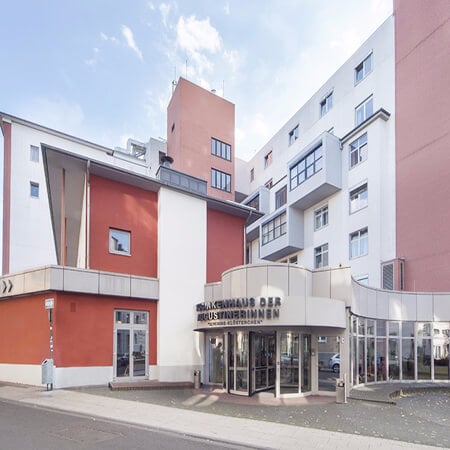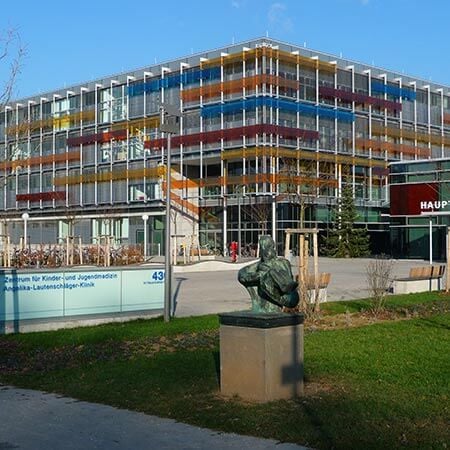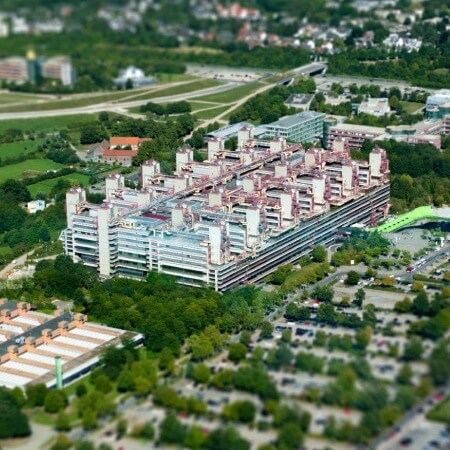Bronchial stenosis is an impairment of bronchial patency. Stenosis leads to respiratory failure. The most common organic causes of stenosis are tumors and scars. An operation is often required to restore breathing. In most cases, it is performed using the bronchoscopic technique: using endoscopic instruments, without skin incisions. In German clinics, patients can undergo diagnostics to determine the exact cause of the development of stenosis, as well as the necessary treatment and rehabilitation to prevent the recurrence of the pathology.
Content
- Indications
- What is the process of treatment?
- Bronchial stenosis after lung transplantation
To restore bronchial patency, doctors perform bronchoscopic procedures to destroy tissues that block the lumen of the organ. They use electrocoagulation, laser coagulation, and cryotherapy. Balloon dilatation may also be performed. With a high risk of repeated stenosis, a stent is implanted to prevent recurrent narrowing.
You can undergo treatment at the University Hospital Heidelberg, the University Hospital RWTH Aachen, the University Hospital Frankfurt am Main.
Please leave your request on the Booking Health website, and we will help you choose a clinic and a doctor, make an appointment for treatment, apply for a visa, and prepare the necessary medical documents. You will be accompanied by a medical interpreter at the clinic, and your coordinator will be constantly in touch for any questions.
Indications
An indication for bronchoscopy is bronchial stenosis of the 2nd degree and above if the site of cicatricial or tumor stenosis is located in the trachea, main, intermediate, or lobar bronchi. These sites are accessible by the rigid bronchoscope. In Germany, it is possible to eliminate stenosis in the deeper parts of the bronchial tree, although this is technically more complex. In this clinical case, doctors use a flexible bronchofiberscope.
In the case of malignant neoplasms, bronchoscopic dilatation and laser surgery are palliatives. Such procedures are performed for inoperable lung tumors, which are accompanied by:
- Impaired patency of the trachea and large bronchi
- Hypoxia (oxygen starvation)
- Hemoptysis
- Incurable cough
Bronchial stenosis is often complicated by infections of the upper and lower respiratory tract.
Bronchoscopy is less often performed as a preparation for radical tumor resection. For example, if the neoplasm was detected at an early stage and it grew into the lumen of the bronchus and blocked it. In this case, after the restoration of the patency of the bronchial tree, the patient's condition improves, and doctors can remove a lobe or the entire lung with a lower risk of complications.
Sometimes tumor stenosis is associated with benign tumors: fibromas, fibrolipomas, papillomas, and low-grade carcinoid tumors. In this case, their bronchoscopic removal may be the basis for the treatment of the disease.
What is the process of treatment?
The treatment is carried out with the help of bronchoscopy. This is a diagnostic and treatment procedure, involving the introduction of an instrument into the bronchus. The procedure was first performed in the USA in 1917. Ch. Jackson used forceps to remove benign neoplasms in large bronchi and trachea.
The method was developed in the 1970s. During this period, doctors began using various energies instead of surgical instruments. In 1970, three methods of destroying tumors and scars inside the respiratory tract were described at once: T.G. Polanyi used a CO2 laser, D.G. Chireshkin reported on the use of liquid nitrogen to destroy papillomas the child has in the trachea, and M. Classen used electrocoagulation for the first time. A little later, they began to use a solid-state neodymium laser, the radiation of which was transmitted through a flexible quartz light guide.
In the 21st century, photodynamic therapy has become widespread, and is used for bronchial tumor stenosis. Doctors inject a sensitizer into the patient's body. It accumulates in cancer cells. Then, when tissues are irradiated with light of a certain wave, the sensitizer is activated and destroys the cells from the inside.
After mechanical, laser, or any other removal of the tumor fragment that closed the bronchial lumen, a recurrent obstruction is possible due to the progression of oncological disease. In such cases, an additional procedure is required: bronchial stent implantation. A frame is placed in the lumen of the bronchus, which keeps it open and prevents recurrent tumor stenosis.
Bronchial stenosis after lung transplantation
Bronchial stenosis accounts for the majority of bronchial complications after lung transplantation. It can be of four types: distal, diffuse, at the level of the anastomosis, or within 1 cm proximal to it (closer to the trachea). In 40% of cases, stenosis develops at the level of anastomosis – where the doctor sutures the bronchi. Mortality in the development of bronchial stenosis averages 3%.
The treatment requires a bronchoscopic procedure:
- Balloon dilatation is an expansion of the bronchus with an inflated balloon
- Bougienage is an expansion with a bougie, the diameter of which is increased (several procedures are required)
- Laser surgery
- Electrocoagulation
- Cryotherapy
- Implantation of silicone and nitinol self-expanding stents
To undergo bronchial stenosis diagnostics, bronchial stenosis treatment in Germany, and rehabilitation, you are welcome to use the Booking Health service. On our website, you can find out the cost of medical services. You can compare how much is the price for treatment in different clinics in Germany in order to book a medical care program at favorable prices. The specialists of the Booking Health company will help you choose a clinic and arrange your trip.
Authors:
This article was edited by medical experts, board-certified doctors Dr. Nadezhda Ivanisova, and Dr. Bohdan Mykhalniuk. For the treatment of the conditions referred to in the article, you must consult a doctor; the information in the article is not intended for self-medication!
Our editorial policy, which details our commitment to accuracy and transparency, is available here. Click this link to review our policies.
Sources:
Verywell Health
Healthline
Sience Direct



















